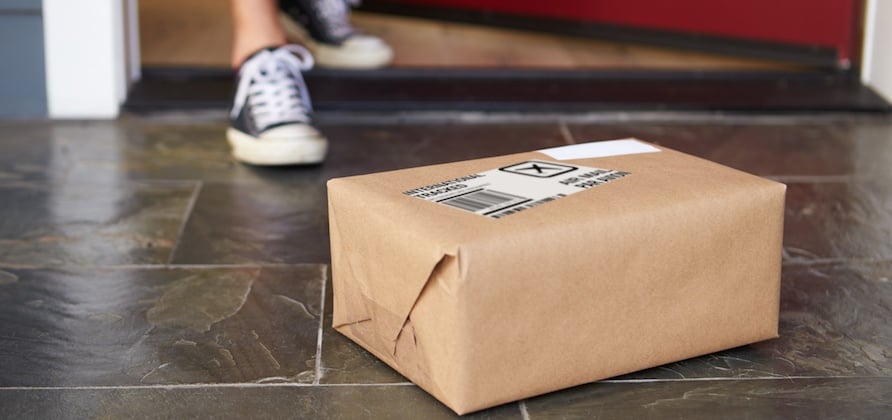
Brick and mortar shopping is going the way of the dinosaur, and more and more people are logging on to get the things they need and want. You can get almost anything delivered to you, from meals you can make at home to clothing clubs that will send you monthly outfits.
Yes, E-commerce has revolutionized the way people buy the products they need. We come back repeatedly for those features like recurring deliveries, local deliveries, and being able to track where your stuff is from your smartphone; have all worked to make buying online nearly effortless.
As these innovations have grown into expectations on the consumer side, fulfillment and logistics have also had to evolve. Without a middle party serving as a buffer, the need for speed and accuracy in direct-to-consumer models are apparent.
So yes, when you think about E-commerce and who can do it best, you certainly think about Amazon, but there are certainly 3PL providers out there who can provide E-commerce solutions as well. But what sets a good E-commerce logistics provider apart is not necessarily how much technology they have, but about the value, they are providing to their customers.
Let’s examine seven things to look for when choosing an E-commerce logistics provider:
1. Quality of Delivery:
Because there is a direct line between the logistics provider and end customers, it’s necessary to go the extra mile for There are no more gatekeepers between the provider and the customer, so it is incredibly important for fulfillment to be done right the first time. This means standardization and inspections to ensure compliance with established customer requirements, whether that means a spot-check of packing practices such as box size, placement, taping, and padding material or adding additional labeling to the product. As much as people like to hear about all the good work they are doing, more often than not the loudest voices are those who receive damaged goods, or their product was delivered late.
2. Error Rate as a KPI:
How a company measures themselves is important, but what is even more important is what they do with that information. The error rate is not the only metric that a good provider will look at, but it is an incredibly important one because it provides quick feedback on the quality of work being performed within the facility. It’s important that within each step of the process there is this feedback. In Lean terminology, this is our first pass yield.
A high error rate could be a key indicator the process is not effective enough to keep up with the agile nature of E-commerce.
Measuring the quality of work being performed within the facility at the site makes life easier for both management as well as the people performing the work. Material handlers have the opportunity to address the errors and improve their work throughout the day as well as managers aren’t scrambling to try to figure out what is wrong. In other words, you aren’t fighting fires, but improving the process, leading to greater efficiency and effectivity, and ultimately delivering more value to customers.
3. Audit Measures:
Because I am a quality professional, I couldn’t help but advocate for the importance of audits! Oh no, not getting away that easily! So why so passionate about auditing, you ask? Most people tend to think of audits as paper pushing, checking to see if you have this document or that document and if you can recite the ISO standards and jargon. However, that is not what is at the root of auditing.
A successful 3PL knows an engaged associate who understands processes inside and out and knows what their role is will always be able to deliver value.
Process audits are a way of getting feedback from internal customers. Not only can you capture where processes are failing, but you can also get information that may be even more valuable, from the associates performing the work. Sure, checking first pass yield (see #2) is important, but the individuals working the process often know best how to improve it. Auditing provides holistic feedback that informs the site on how to make controlled changes to increase the effectiveness of the work being done.
4. Expedient, Quality Turnaround Time on Small Parcels:
The speed at which E-commerce moves and the variability of product types can be a real challenge for a warehouse. With E-commerce, there’s more urgency in every order and possibly fewer hands to touch product along the way. This is the reason why quality and speed must coexist in your warehouse.
An effective 3PL knows that detailed attention and a “see something, say something” attitude fostered among your staff will ensure customers get more than a fast delivery––they will get a high-quality experience with your brand as well.
5. Weighing Customer Feedback:
Staying in tune with what your customers are saying about the fulfillment process is one of the best ways to “take the temperature” of customer’s perspective. Pay particular attention to what customers are saying about problems during direct (B2C) shipments.
Reviews can make or break a product or a company, and, often, the delivery experience factors into reviews, good or bad.
A good 3PL understands the external voice of the customer informs how they operate and actions must be taken to address gaps, whether that be a process, personnel, or productivity.
6. Assembly Line Process:
Remember that high-velocity, high-quality small parcels? A good 3PL knows assembly line thinking is imperative within their processes, whether it be manual or if they have sophisticated machines such as conveyors and sorters. Building processes that are made for repeatability and that look to reduce the “8 wastes of lean” are great ways to ensure your assembly line processes are efficient.
With the high demand nature of E-commerce, the team at the facility needs to be clear on the demands within their “sandbox.” It’s not enough to have a procedure or standard work for the entire process, but there must be prescribed work instructions for each step of the process. Minimizing potential pitfalls such as too much inventory on the line which can lead to mistakes.
7. Quality Transportation:
This is one that perhaps a lot of 3PLs do not think about if they do not provide transportation services because once it leaves the door, it’s out of their hands right? Not necessarily. Big names in transportation don’t always translate to reliable, quality service. A good 3PL knows monitoring the quality from dock door to front door is important and sees it is necessary to have a robust internal process that can mitigate issues that may arise from a carrier making a mistake. Questions to ask should be along the lines
1. How often are they failing to make it to their destination promptly or even at all?
2. How responsive is the carrier when it comes to questions and troubleshooting?
Even if you aren’t providing transportation, this is still customer feedback (see #5), and perhaps from such feedback, there are improvements that can be made internally, such as improving communication channels between the 3PL, the customer, and the transportation provider.
Remember: Quality counts at every point in the supply chain, even if the product is no longer at the dock door. Not only is the reputation of the customer on the line, but yours is too.
To Sum It All Up
Ready to know more about finding the right 3PL partner for your E-commerce needs? The search-and-filter process is complex but much easier to navigate when you have guidance and expertise in-hand.
Download our eBook, Selecting and Managing a 3PL: Best Practices, to learn about the best way to evaluate your potential 3PLs.
{{cta(‘ac56a9fb-7647-4058-b69d-ff3e7acf5183’)}}

